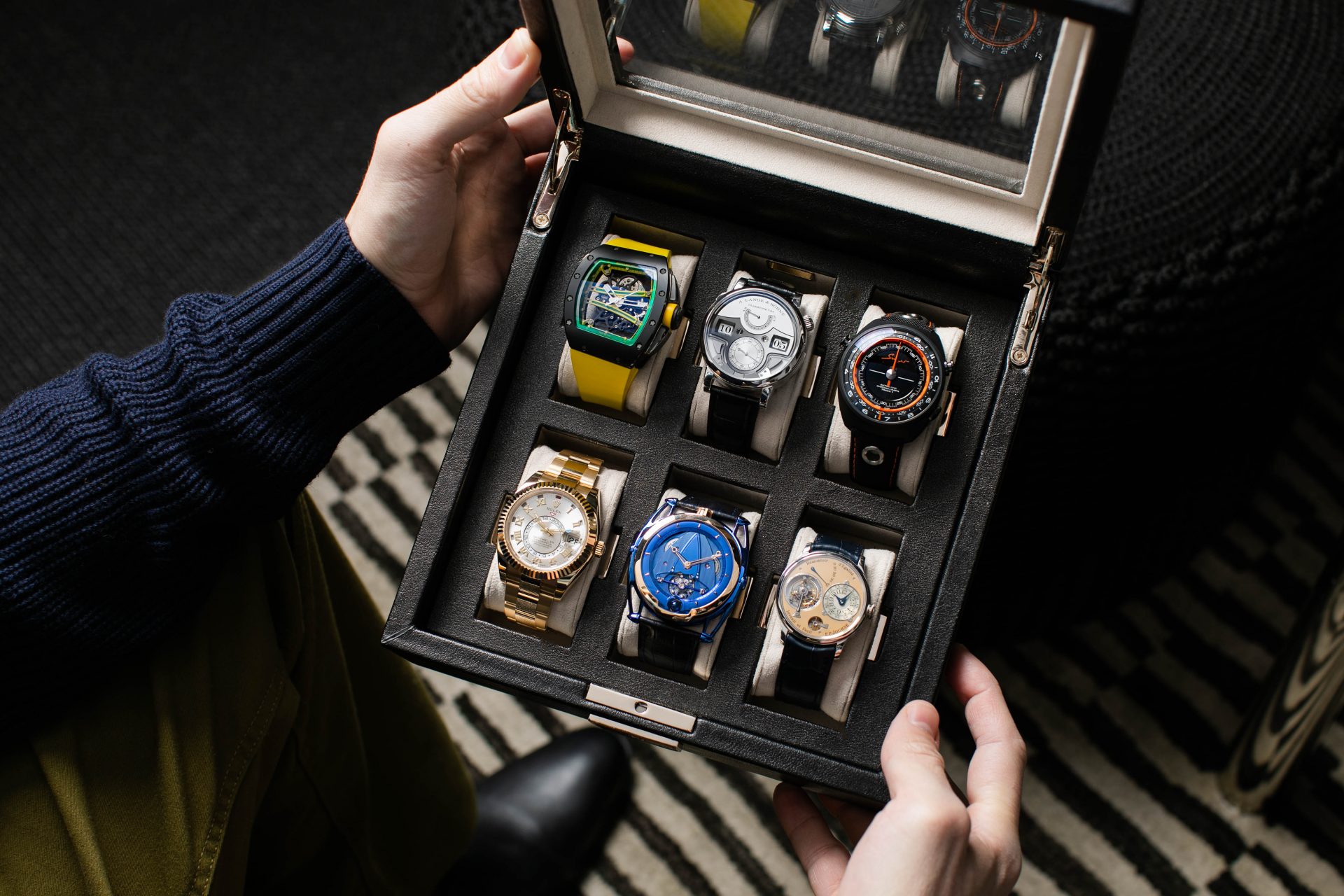
A week into my role as editor at WATCHPRO and, so far, despite my starting date of the 4th of July, there have been no big fireworks in the London office. That said, there have definitely been some lively debates and healthy differences of opinion.
While trying to catch up with the fast-moving pace of daily digital content creation, a monthly print title and multiple global shows, conversation keeps returning to the difficulties in buying certain watch models and the reasons behind this.
I always feel that I’m going slightly against the grain when I say that I don’t blame brands or retailers.
Despite the waves of disappointment and anger brewing among buyers, it just seems too easy to lambast producers such as Audemars Piguet, Patek Philippe and Rolex for the popularity of their product or for their ‘waiting lists’ and the access to them.
Of course, I do sympathise with the despondent shoppers who find that they cannot buy their ‘dream’ watch.
I, too, have found myself fantasizing about the white-dial, steel Daytona that I will probably never own (along with the Hermès Birkin and limited-edition Ferrari) but in all honesty, I only blame myself.
My advice has always been to buy a watch because you love it, not because you want to make money on it, and that still stands
I could have added my name to the ‘register of interest’ in 2013 – or at any time since – and would now be a proud owner. I didn’t. I missed the boat and now I will find myself on the wrong end of a decade-long wait, but I just have to suck it up.
What really fascinates me is the wider discussion around the drought, which sees all logic pushed aside in favor of outlandish theories and claims of skulduggery.
Talk of production being deliberately reduced or distribution withheld would, for some brands, involve tens of thousands of people being part of a conspiracy to rival that of faked moon landings.
And any suggestion that companies are squirreling away hundreds of thousands of watches in secret vaults to push up demand is equally ludicrous.
Of course, 2020 and 2021 did see fewer watches coming to market as the global pandemic meant that production of almost every luxury consumer good ground to a halt with manufactures temporarily closed.
At the same time, a new audience under virtual house arrest started to take an interest in watch websites, blogs and online articles.
With little actual news outside of covid, stories about the huge growth in prices of certain vintage models filtered through into the mainstream press.
This was all the more attractive to readers when a celebrity name could be dropped into a header – whether paid ambassador or genuine enthusiast.

While serious collectors and dealers have long been trading in rare pieces – and some with an eye on future trends have gambled on certain models, stockpiling them for the future – the all-in gold-rush probably gathered steam in 2017 with the $17.8m sale of Paul Newman’s Paul Newman, the exotic-dial Rolex owned by one of the coolest men of all time.
For journalists and consumers alike, the watch had it all from its personal connection to Newman, being one of the rarest examples of a Daytona dial – and, of course, its (at the time) unprecedented price tag.
Suddenly, the world was interested in watches.
Stories poured out of the woodwork about barn-find Rolexes, Pateks, Omegas, Jaeger-LeCoultres, Audemars Piguets and Cartiers, and no edition of Antiques Roadshow was complete without at least one guest being ‘shocked’ by the value of grandad’s beaten-up timepiece.
And this is where things escalated.
All at once, everyone and his dog wanted a big-name watch.
And why not? The media was telling us that a £5,000 investment could make double or triple that virtually overnight and we all understandably wanted a piece of it.
The sleazier side of trading took over and, as has happened since throughout history – think about Second World War rationing and toilet paper shortages during the pandemic – the flippers moved in, buying up as many pieces as possible at retail and selling them on at huge profit when the time was right.
At the same time, the increasingly sensationalist reports of investment opportunities encouraged people who may never have thought about spending thousands on a watch before to treat themselves or someone else to a piece of the action.
With production remaining steady, the market simply couldn’t accommodate the new run on watches, pre-owned prices soared higher and added more fuel to the demand that was already out of control.
And, in proportion to reduced supply, the anger among those unable to buy their watch of choice, increased.
In the job that I do, I am often asked if I can help people to buy a certain hard-to-get watch – a decade ago, requests for a TAG Heuer or Breitling were the most common but today, nine times out of 10, it will be one of three or four models by Rolex or Patek.
My stock answer is that, even with my brand relationships, I can’t help – like the rest of the world, I need to join a retailer’s waiting list.
My question to the angry hoards who have ‘always wanted X’ would be, if you have desired it for so long, why didn’t you buy it five years ago when pretty much any watch was available to buy in store?
Before the stampede, I picked up both a Milgauss and a Day-Date, while my late father managed to buy himself a Submariner Date by simply walking into a jeweller and asking for it.
Could it be that the burning desire to own ‘X’ is simply a reaction to recent shortages?
And while there is nothing wrong with that at all, we have to acknowledge that just as we are influenced by an easy return on investment, so is everyone else.
As with the latest ‘It’ bag or limited-edition sneaker drop, there is a finite pool of watches available and surely it is fair for retailers to offer these to people who genuinely want to own and wear them?
Everyone from brand to retailer to end user wants to ensure that the watches do not end up in the hands of chancers and flippers.
How can a retailer allocate pieces other than on the basis of a trusted client relationship – built up by a track record of buying or a friendship built through a genuine interest in the watches for sale?
My advice has always been to buy a watch because you love it, not because you want to make money on it, and that still stands.
One positive result of certain brands being hard to obtain is that genuine buyers are being encouraged to look at alternative brands – especially independents.
According to Zurich-based auction house Ineichen, vintage prices are already starting to dip and flatten and, as Rob Corder reported here last week, levels are starting to fall for crazily priced pre-owned.
As this happens, speculators will fall away and the flow of watches will eventually return to close to normal. It will be interesting to see how many actual customers remain when the resale prices for watches moves closer to their retail value.


The focus has been the primary market, with its waitlists, snobbish ADs, and endless finger pointing at manufacturers (Rolex especially).
In reality, it’s the secondary market entirely independently which has caused the stupid to happen. In the before times, if you couldn’t find a Milgauss or a Sub new, you’d go looking for a really good used one – sacrificing the first owner experience in return for saving a bit of cash.
But, since the secondary market generated a gigantic bubble for itself, anyone who isn’t looking to flip for profit is going to prefer to sit and wait for a new watch at retail. Which will increase wait lists. Which will drive secondary prices higher.
Truthfully, there’s no shortage of watches on the market – just look at Chrono24, and you’ll find just about every Rolex, AP, etc there ever was. What there is though, is a shortage of realistically/sensibly priced watches on the market.
Last week, for example, a certain well known online secondary trader had a 2021 Tudor Royal up for £500 over retail… this week the price has been slashed to a mere £200 over RRP. For a Tudor Royal 41mm blue dial…
The prices have been cooling recently, but we now have the problem that there’s so many people with so much money sunk into overpriced wristwatches that the secondary market might effectively lock up – sellers not prepared to take a bath on something they paid well over the odds for, and buyers not prepared to silly asking prices.
In the very long term once it all calms down, I think the real losers here are going to be the local/indy used retailers. Whether they helped create the bubble, or just surfed along in its wake, the guilt by association in the eyes of the watch community will probably reduce their customer base.
My local watch dealer has three MoonSwatches in his window at £900 (as well as the usual array of ludicrously priced Rolexes). Despite the fact his Omegas etc are sensibly priced, it automatically leads you to question if he’s not also gouging on the Aqua Terras and Avengers he’s got in the window too.
Ultimately, the real winners here are Rolexes competitors – Grand Seiko especially – and that I think is Rolex’s real misstep. Its not just about losing an OP41 sale to a Aqua Terra or Spring Drive, it’s the sales subsequent to that initial sale.
Right, think my high horse has had plenty exercise for today.
At last, a voice of reason from the press. Well said Tracey. My sentiments entirely. Conspiracy theorists, fantasists, grumblers and moaners take heed.
At last, a voice of reason from the press. Well said Tracey. My sentiments entirely. Conspiracy theorists, fantasists, grumblers and moaners take heed.